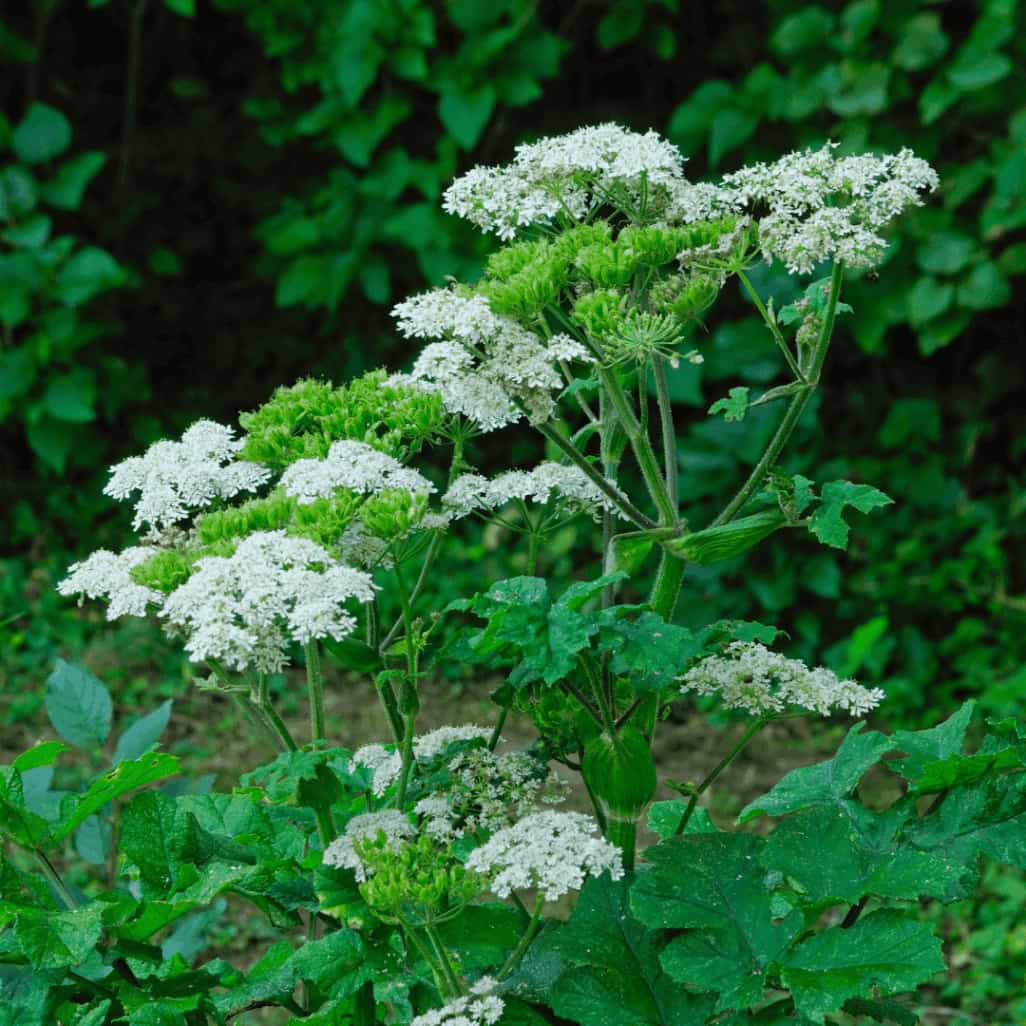A Guide to Hazardous Plants in Alaska: Ensuring Your Child’s Safety in the Wild.
Do you love exploring the Alaskan wilderness? It’s an exciting adventure, but it’s crucial to be careful and avoid dangerous plants that can make you sick. Watch out for plants like Cow Parsnip, Devil’s Club, Baneberries, and Water Hemlock, which can be harmful if you touch or eat them. Check out our guide to learn more about these hazardous plants and how to spot them!
How can we teach our kids to identify these plants and stay safe while playing in the woods? Here are some tips:
- Educate your kids: Teach your children about the potentially hazardous plants they may encounter in the woods. Show them pictures (see below) of Cow Parsnip, Devil’s Club, Baneberries, and Water Hemlock and explain why they should avoid them.
- Point out warning signs: Point out warning signs such as spiny leaves, white flowers, and red or black berries. These are indications that a plant may be hazardous and should be avoided.
- Establish boundaries: Set boundaries with your kids on where they can play in the woods. Try to avoid areas with potentially dangerous plants or ensure that your children know to stay away from them.
- Provide protective gear: If you know your kids will be playing in areas with potentially hazardous plants, provide them with protective gear, such as long-sleeved shirts and pants. This can help prevent direct contact with the plants.
- Supervise your kids: Always supervise your children when they are playing in the woods. This way, you can ensure they are playing in a safe environment and avoid contact with dangerous plants.
Cows Parsnip
Appearance:
- Cow’s Parsnip is a common plant found in Alaska’s forests
- Grow up to 10 feet tall
- Its leaves are large and deeply lobed, with a fuzzy texture distinguishing it from similar plants.
- The flower head is made up of numerous small white flowers.
- Blooms in late May to June.
Danger:
- Cow Parsnip can cause serious skin irritation if touched. If your child’s skin is exposed to both the sap and sunlight, they may develop a painful rash, blisters, and even burns.
Treatment:
- If your child comes into contact with the sap, immediately wash the affected area with soap and water and avoid exposing it to sunlight for at least 48 hours. Consult your pediatrician if symptoms persist or worsen.
Devil’s Club
Appearance:
- Devil’s Club is a woody shrub
- Grows up to 15 feet tall
- Commonly found in the rainforests of Alaska.
- Its unique features include large, spiky stems and leaves covered with sharp, stinging spines, making it easy to identify.
- The berries are bright red and are in clusters. They are not edible to humans.
Danger:
- Devil’s Club is one of the most dangerous plants in Alaska due to the potential harm it can cause when touched. It can cause severe pain, rash, blisters, swelling, itching, fever, nausea, and difficulty breathing.
Treatment:
- If you or your children come into contact with the plant, remove any spines or bark fragments from your skin immediately and wash the affected area thoroughly. Applying a cold compress or taking antihistamines can help to alleviate the symptoms. Seek medical attention if the pain or swelling worsens.
Baneberries
Appearance:
- Baneberries are small, bushy plants.
- They grow up to 3 feet tall.
- They have large leaves and produce clusters of small white flowers that eventually give way to berries.
- The berries are round and shiny and have a distinctive appearance, with a white sclera and a black pupil, resembling human eyes.
- The red berries typically form in late June.
Danger:
- Baneberries are highly toxic, and every part of the plant should be avoided. When ingested, the berries can cause various symptoms ranging from drowsiness, nausea, vomiting, and abdominal pain to cardiac arrest or even death. The toxins present in the plant can also cause skin irritation, rashes, and inflammation upon contact.
Prevention & Treatment:
- If ingested, seek medical attention immediately. Remove all berries or plant matter from your child’s mouth, and refrain from giving them food or drink until they receive medical attention.
Water Hemlock
Appearance:
- Water Hemlock is a perennial plant
- They can grow up to 6 feet tall.
- Its stems are hollow and smooth, with a greenish-purple hue.
- It has large, compound leaves and clusters of small white flowers with five petals arranged in an umbrella-like structure.
- Typically flowers in June or July
Danger:
- Water Hemlock is one of the most poisonous plants in North America. All parts of the plant contain a toxin called cicutoxin, which can cause seizures, convulsions, and, ultimately, death. The toxin can be absorbed through the skin or ingested; even a small amount can be deadly.
Treatment:
- If ingestion occurs, seek medical attention immediately. Inducing vomiting is not recommended, as it can cause more harm than good. Early detection and prompt treatment are crucial to minimize the risk of severe complications.
In conclusion, playing in the woods is an excellent way for children to explore and connect with nature. However, it’s crucial to ensure their safety by being aware of the potentially hazardous plants in the area and teaching our kids to identify them. You can help your children stay safe while having fun in the great outdoors!

